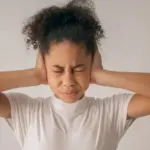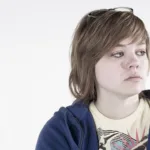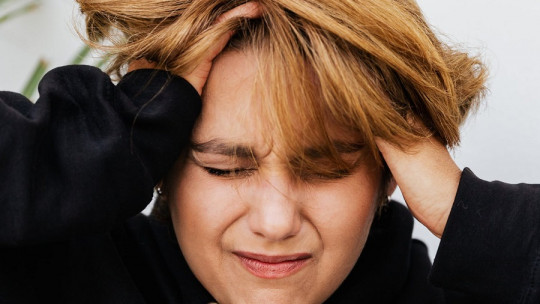
The prevalence of anxiety disorders in the world population is very high. Some studies consider them to be the most prevalent mental disorders, and others, the second most prevalent. Cognitive-behavioral techniques for anxiety They are the most used for this type of disorders.
In this article we will learn about the five most common anxiety disorders, their basic characteristics and what specific cognitive behavioral techniques are used for each of them, mentioning their common psychological components and strategies.
Cognitive-behavioral techniques for anxiety
Anxiety disorders are one of the most common mental disorders in the population worldwide.
These can be of different types, and involve everything from the presence of generalized anxiety in daily life (generalized anxiety disorder or GAD), to the presence of panic attacks (panic disorder) and the constant fear of suffering from them and not being able to receive help (agoraphobia), or the irrational fear of a specific stimulus, object or situation (specific phobia). A phobia of social situations (social phobia) is also considered an anxiety disorder.
As we see, there are a wide variety of anxiety disorders. The treatments used for them also vary, and we find pharmacological options (anxiolytics, antidepressants…) and of course, psychological ones. The most frequently used psychological treatments are, along with relaxation techniques, cognitive-behavioral techniques for anxiety.
Let’s see what type of cognitive-behavioral psychological techniques we can use for each type of disorder:
1. Panic disorder
Panic disorder, categorized as such in the DSM-5 (Diagnostic Manual of Mental Disorders), is characterized by the presence of unexpected and recurring panic attacks (2 or more). Furthermore, the person feels a continuous worry about suffering from them again, or about their consequences.
The cognitive-behavioral techniques for anxiety used in the case of this disorder include two classically known therapies: Barlow’s panic control treatment and Clark’s cognitive therapy:
1.1. Barlow Panic Control Treatment
This treatment includes a prominent educational component. Regarding its characteristics, Treatment includes systematic exposure to interoceptive sensations (sensations that come from the internal organs of the body), similar to those that occur in a panic attack.
The treatment also includes the cognitive restructuring technique, which aims to modify the patient’s erroneous beliefs about panic and anxiety. Finally, it includes breathing and/or relaxation training, as well as homework assignments. It is worth mentioning that the breathing and/or relaxation techniques used have not been proven to be effective as an isolated component.
In short, cognitive-behavioral techniques for anxiety that Barlow proposes in his therapy emphasize exposure to perceptual sensations (and in fact it is the characteristic that differentiates it from Clark’s cognitive therapy).
1.2. Clark Cognitive Therapy
Clark’s cognitive therapy, also called cognitive therapy program, instead emphasizes the cognitive component. This therapy focuses on working on the patient’s catastrophic cognitions, such as “I won’t be able to breathe,” or “I’ll drown.” It also includes the patient’s testing of his catastrophic interpretations and replacing them with more realistic interpretations.
On the other hand, it also includes the induction of feared sensations, through “experiments” such as focusing attention, with the aim of showing the possible causes of the sensations that the patient has.
Finally, in Clark’s cognitive-behavioral techniques for anxiety, the therapist recommends the patient abandon safety behaviors (such as “always be accompanied”, “wear amulets”, etc.), in order to disconfirm negative predictions of the consequences of the symptoms you have.
2. Agoraphobia
Agoraphobia is an anxiety disorder characterized by the fear of being in public places or in situations where it is difficult to receive help in case of a panic attack or “escape.” So, fear appears in public places, not open, as is popularly thought
Cognitive-behavioral techniques for anxiety used in the case of agoraphobia include cognitive behavioral therapy (CBT), which in turn usually includes the following components: anxiety and panic education (psychoeducation), controlled breathing, restructuring cognitive, live self-exposure, interoceptive exposure and recordings.
Its effectiveness may decrease if the time spent on live exposure is reduced This type of therapy usually produces fewer dropouts and fewer relapses into panic attacks than isolated in vivo exposure techniques.
3. Specific phobias
Specific phobias are characterized by excessive and irrational fear of “harmless” stimuli, objects or situations, or that should not cause such levels of fear and anxiety. For example, it would be the phobia of flying, the phobia of insects, snakes, clowns, the dark, etc.
In this case, the cognitive-behavioral techniques for anxiety used include some treatments, such as Ellis’s rational emotive therapy (ERT), Meichembaum’s stress inoculation training, and Goldfried’s systematic rational therapy.
This type of therapy (CBT) for specific phobia It aims to ensure that exposure to the phobic stimulus is done with as little anticipatory anxiety as possible along with more adaptive and realistic attributions of the patient’s reactions.
4. Social phobia
Social phobia, as we have already mentioned, involves excessive anxiety in social situations that involve exposing yourself to others an interaction with other people, being at parties, starting conversations, presenting work in public, etc.
Cognitive-behavioral anxiety techniques used for social phobia include classic cognitive behavioral therapy (which is usually combined with the use of antidepressants).
In this therapy, cognitive techniques are applied along with exposure (a fundamental element) to social situations. This is done both in therapeutic sessions and in homework assignments.
4.1 Objectives of CBT in social phobia
The objectives of CBT in social phobia include: eliminating the negative expectations that the patient has regarding control over their behavior, suppress recurring thoughts about feared consequences shift attention to the physical symptoms of anxiety and curb the tendency to set such perfectionistic goals.
They also include eliminating the tendency to belittle one’s achievements, and finally, creating the need to be active and focus on what one can do.
5. GAD (Generalized Anxiety Disorder)
The TAG implies a chronic, non-specific concern that appears in multiple situations of daily life A kind of “floating anxiety” appears. This anxiety disorder is the second most prevalent anxiety disorder in the general population.
The cognitive-behavioral techniques for anxiety used for GAD in particular are techniques considered effective, and include some of the following components: psychoeducation, problem-solving techniques, questioning whether worries are dangerous and the usefulness of worries, exposure in imagination to the worst fears, applied relaxation and maintenance of achievements and prevention of relapses.
Specific cognitive-behavioral treatments that we can find for GAD are: the Brown & col. treatment, the Barlow treatment, the Dugas treatment and the Wells treatment.








